#malaise
Junkyard Find: 1978 Ford Mustang Stallion
After the first-generation Mustang went from frisky lightweight to bloated monstrosity, Ford transferred the name over to an economy car based on the Pinto. This proved to be a wise move, in light of certain geopolitical events that took place right around the time the first Mustang IIs began rolling into showrooms, but most of the old Mustang magic was lost during the Pinto-ization process.
Ford created a bunch of flashy trim packages for the car, and I spotted one of the more unusual ones in a Denver self-serve yard a couple of weeks back: the Stallion.
Junkyard Find: 1981 Toyota Corona Wagon
Because my very first car was a 50-buck ’69 Corona sedan in dazzling beige, I always photograph Coronas when I see them in wrecking yards. Sadly, Toyota stopped selling the Corona in North America in 1982, which means that I might see one every couple of years these days. Here’s a luxurious, fully loaded 1981 Toyota Corona wagon in a Denver self-service yard.
Junkyard Find: 1978 Toyota Truck
Junkyard Find: 1978 Subaru DL Sedan
Living in Colorado, I see so many discarded Subarus during my junkyard explorations that it takes a very unusual one to make me reach for my camera. An SVX might do it (though not always), or maybe a BRAT (again, not always), or perhaps a Subaru with Saab badges. A really early Subaru, from the Malaise Era days when few Americans took the brand seriously — I think that’s always worth shooting.
Here’s a first-generation Leone that I had to go all the way to Northern California to find.
Junkyard Find: 1980 Datsun 310 Coupe
Junkyard Find: 1976 MG MGB
In all of my decades of visiting junkyards, one thing has remained constant: I’ll see a handful of Fiat 124 Sport Spider s and MG MGB s every year, about the same number in 2018 as I saw each year in 2001 or 1987. Here’s the latest: a red ’76 convertible in a self-service wrecking yard in California’s Central Valley.
Junkyard Find: 1977 Chevrolet Caprice Classic Coupe
Junkyard Find: 1982 Dodge 400 Landau Coupe
Lee Iacocca’s original Chrysler K Platform spawned an incomprehensible tangle of K-related offspring between the 1981 and 1995 model years, but only a few U.S.-market models were true K-Cars: the Chrysler LeBaron, Plymouth Reliant, Dodge Aries, Dodge 600, and Dodge 400.
Of these, the 400 has been the hardest for me to find in the self-service wrecking yards I frequent; in fact, this is the first junkyard Dodge 400 I’ve photographed.
Junkyard Find: 1979 Oldsmobile Cutlass Supreme
Junkyard Find: 1983 Mercury Lynx L Wagon
Rare Rides: This 1975 Chevrolet Is Both Vega and Cosworth
An enterprising GM executive, a British tuning company, and a compact hatchback came together in 1975 to make a very special, limited-production Chevrolet.
It’s the Cosworth Vega, naturally.
Rare Rides: A 1977 Chevrolet Monza - the Malaise Mirage
Today’s Rare Ride is a special, sporty edition of a rather mundane Malaise subcompact. It hails from a time when the American customer matched the color of their vinyl seats to their wide lapel. So let’s delude ourselves for a few minutes with the Monza Mirage.
Junkyard Find: 1981 Ford Escort GL Sedan
Junkyard Find: 1976 Plymouth Volare Coupe
The A-Body Plymouth Valiant (and its Dodge sibling, the Dart), stayed in American production from the 1960 model year all the way through 1976. Legendary for its sturdiness, the Valiant was sure to be a tough act to follow. The Plymouth Volarés and Dodge Aspens appeared in 1976, never gained the affection given to their predecessors, and were facelifted and renamed the Gran Fury and Diplomat in 1981. Here’s a luxed-up first-year Volaré I spotted in a Northern California self-service yard.
Junkyard Find: 1982 Oldsmobile Cutlass Ciera
Every so often, I’ll be poking around in one of the self-service wrecking yards I frequent and I’ll come across a very nice older car, clearly babied by its original owner for just about its entire life. It will be a car whose resale value depreciated to insignificance decades ago, dooming it to a junkyard parking space the moment its owner trades it in.
Today’s Junkyard Find is such a car.



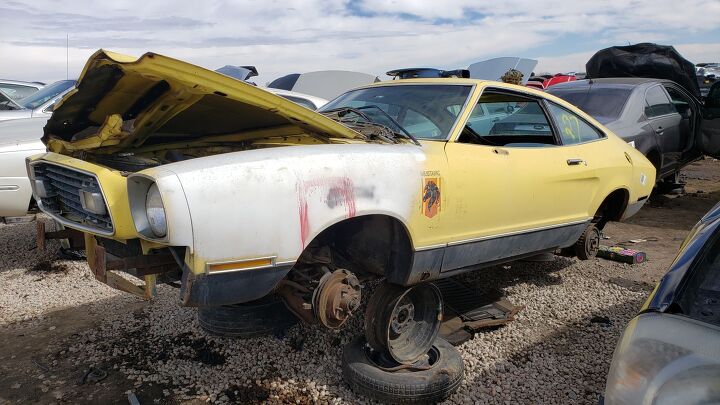
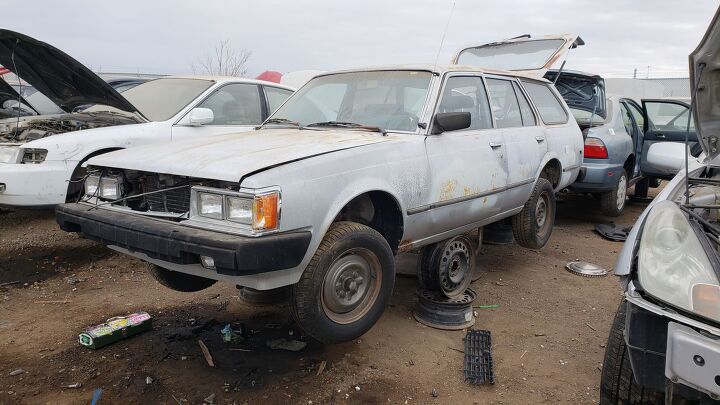

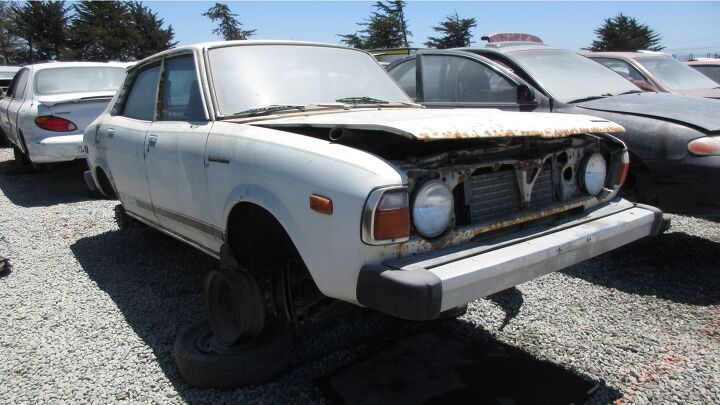
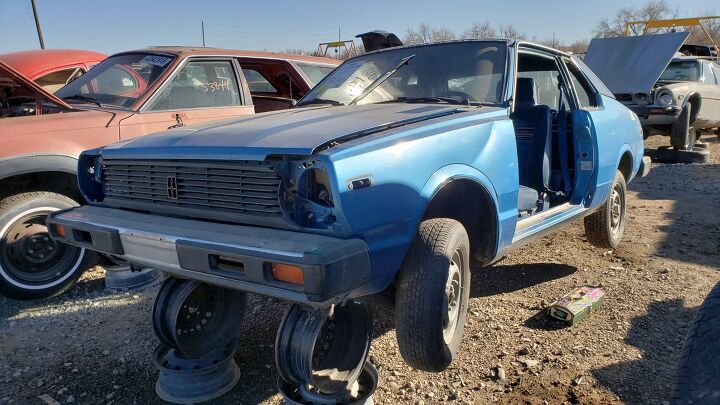
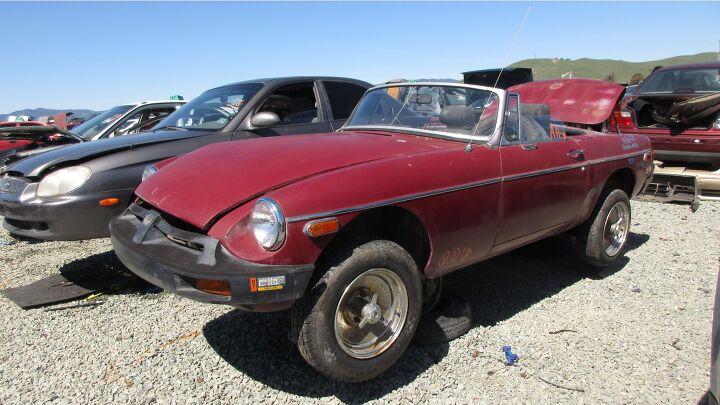

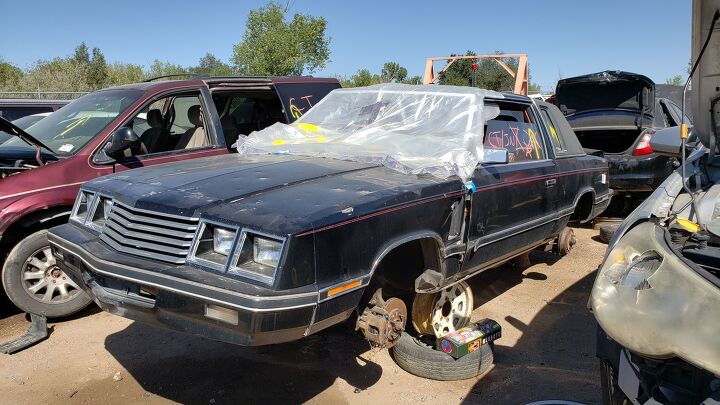



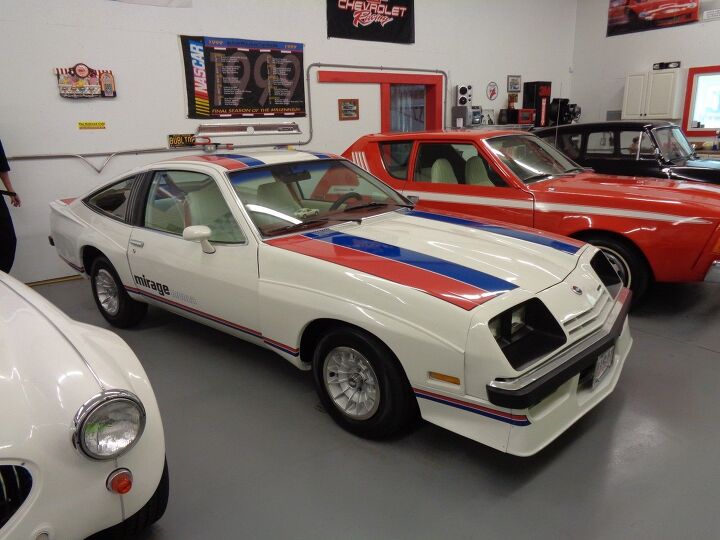
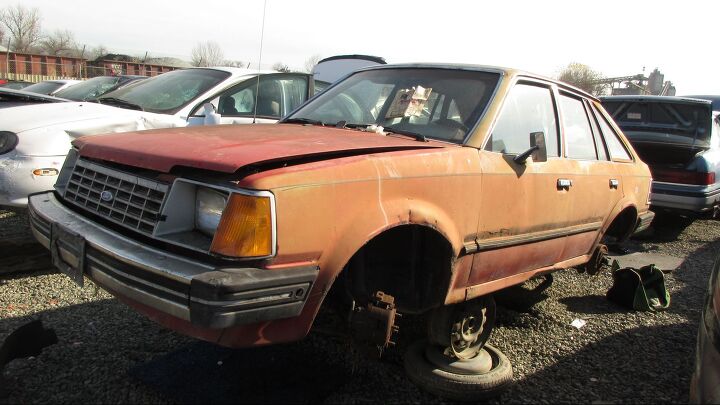
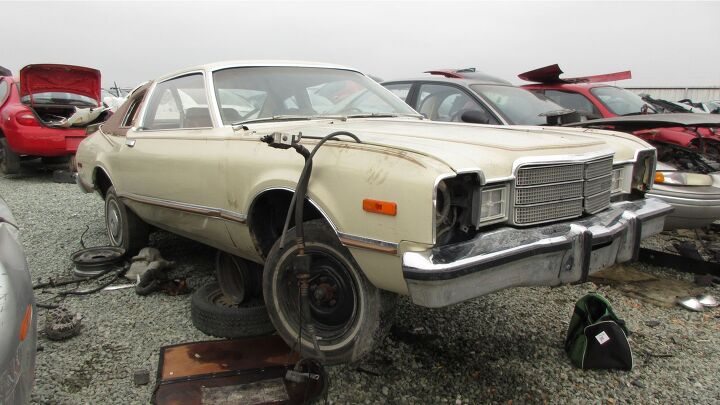













Recent Comments